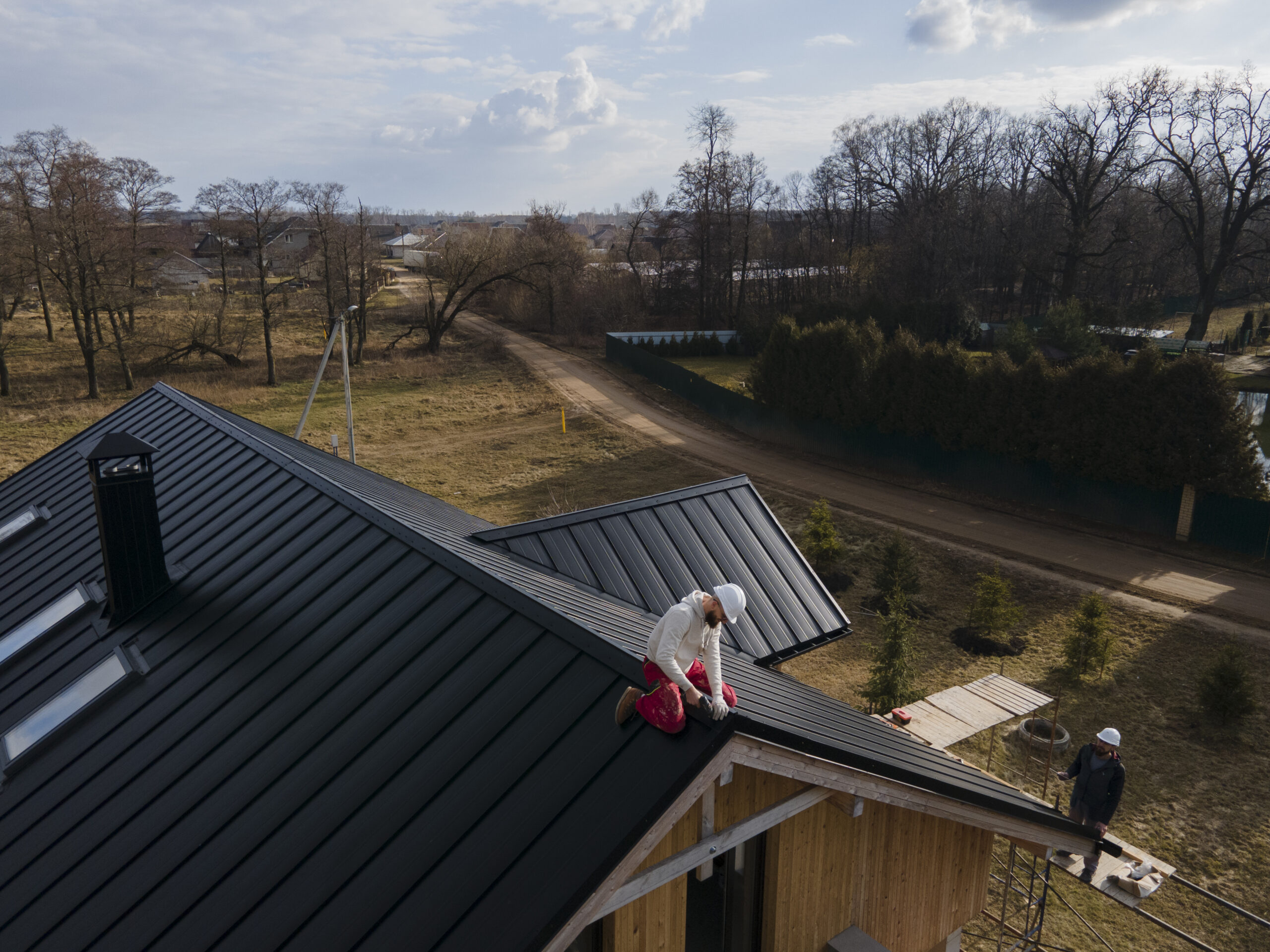What Is Wildfire Resilience? Building Stronger Communities Against Wildfires
Wildfires are one of the most devastating natural disasters we face today. They strike with little warning, move at terrifying speeds, and leave behind destruction that can take decades to heal. From California to Colorado, Greece to Australia, fire seasons have transformed into year-round threats.
As fires worsen, a pressing question emerges: What is wildfire resilience, and how can we build it into our communities?
Unlike prevention, which aims to stop wildfires from starting, resilience recognizes that fires are inevitable. The key lies in preparation, adaptation, and recovery so that lives, homes, and communities can survive and even thrive in the aftermath.
This article is your complete guide to wildfire resilience. Whether you’re a homeowner, policymaker, or community leader, the strategies here will help you understand resilience and put it into action.
Table of Contents:
- What Is Wildfire Resilience?
- Why Does Wildfire Resilience Matter Today?
- The Science Behind Wildfires and Resilience
- Key Elements of Building Wildfire-Resilient Communities
- How Can Homeowners Improve Their Own Wildfire Resilience?
- 5 Common Questions About Wildfire Resilience
- Case Studies: Communities Leading in Wildfire Resilience
- The Role of Policy, Technology, and Insurance
- Challenges to Building Wildfire Resilience
- Future of Wildfire Resilience
- Psychological and Social Dimensions of Resilience
- Resilience for Vulnerable Populations
- How Businesses Can Contribute to Wildfire Resilience
- Global Perspectives on Wildfire Resilience
- Conclusion and Call to Action
What Is Wildfire Resilience?
Wildfire resilience is the ability of individuals, communities, ecosystems, and infrastructure to prepare for, withstand, adapt to, and recover from wildfires.
Where prevention focuses on reducing the chance of a fire starting, resilience accepts that fires are inevitable, especially in ecosystems where fire is part of the natural cycle. Instead of asking “how do we stop fires?” resilience asks:
- How do we minimize losses when fires occur?
- How do we protect lives and property more effectively?
- How do we recover faster and rebuild stronger?
In practice, wildfire resilience includes:
- Home Hardening: Designing homes to resist ember attacks.
- Community Planning: Creating evacuation routes, firebreaks, and preparedness programs.
- Environmental Management: Using prescribed burns and vegetation thinning to reduce fuel loads.
- Financial Stability: Ensuring insurance coverage and recovery funds.
- Social Preparedness: Educating residents and strengthening community networks.
Why Does Wildfire Resilience Matter Today?
Resilience has always mattered, but the stakes have never been higher.
- Higher global temperatures mean longer fire seasons.
- Droughts dry out vegetation, making it explosive fuel.
- A recent UN report predicts wildfires will increase by up to 50% by 2100.
- More than 46 million U.S. homes are located in the WUI areas where wildlands and communities overlap.
- As development expands, so does exposure to wildfire risk.
- Between 2017 and 2021, U.S. wildfire losses exceeded $81 billion in insurance claims.
- Entire local economies collapse when businesses, farms, and infrastructure are destroyed.

- Wildfire smoke is linked to asthma, heart disease, and premature deaths.
- Smoke can travel thousands of miles, affecting millions outside fire zones.
- Fires destroy habitats, reduce biodiversity, and destabilize watersheds.
- Post-fire flooding and mudslides can cause more damage than the flames themselves.
The Science Behind Wildfires and Resilience
1. The Fire Triangle
At its core, every fire needs three elements: fuel, heat, and oxygen. This is known as the fire triangle. Remove or reduce any one of these, and a fire becomes far less destructive.
- Fuel: Includes vegetation like dry grass, brush, and trees, as well as artificial materials such as wood siding or decks. Resilience strategies focus heavily on fuel management, such as creating defensible space, thinning vegetation, and conducting prescribed burns.
- Heat: Wildfires can start from lightning, sparks, or even human activity. Higher global temperatures also increase the baseline heat in many regions, making ignition easier. Resilience acknowledges that ignition sources can’t always be eliminated but can be anticipated through red-flag warnings.
- Oxygen: While air is abundant, wind determines how quickly oxygen feeds flames. Strong winds can push fires faster than humans can outrun them. That’s why resilience includes community-wide evacuation planning because wind-driven fires spread too fast for last-minute decisions.
Understanding the fire triangle helps planners and homeowners take targeted actions, such as clearing fuel near homes, avoiding ignition sources during high-risk weather, and hardening structures against wind-driven embers.
2. Ember Attacks: The Hidden Threat
- What Are Embers? Tiny burning particles carried by wind, sometimes traveling up to a mile ahead of the fire front.
- Why They’re Dangerous: Embers land in vulnerable spots such as wooden decks, open vents, and gutters filled with dry leaves. Once a single home ignites, it can trigger a chain reaction across neighborhoods.
- Install ember-resistant vents that prevent hot particles from entering attics.
- Replace flammable roofing and siding with non-combustible materials like tile, metal, or stucco.
- Keep gutters and yards clear of debris that embers can ignite.
- Store firewood at least 30 feet away from structures.
In short, if you defend against embers, you protect against most wildfire risks.
3. Megafires and Fire Behavior
- Fire-Driven Weather: Megafires create their own weather systems, generating fire tornadoes, lightning, and erratic winds. This makes firefighting extremely dangerous and often ineffective.
- Rapid Spread: Fueled by drought and wind, megafires can cover miles in just hours. Communities must evacuate quickly or risk being overtaken.
- Suppression Limits: Traditional firefighting tools, such as water drops or bulldozed fire lines, are often overwhelmed.
- Prioritize early evacuation warnings to prevent loss of life.
- Build redundant evacuation routes, since one road may be cut off.
- Harden infrastructure such as power lines and water supplies so recovery is possible even after megafires pass.
Megafires prove that resilience is not about “stopping” fire, it’s about living smartly in fire-prone environments.
4. The Ecological Role of Fire
- Forest Regeneration: Some tree species, like lodgepole pines, rely on fire to release seeds from cones.
- Fuel Recycling: Burns out dead plants and undergrowth, reducing the likelihood of future catastrophic fires.
- Wildlife Benefits: Fire can create new habitats for specific species by opening up dense forests.
The problem is that for decades, wildfire suppression policies have prevented all fires, including the beneficial ones. This caused dangerous fuel build-ups, turning small, natural fires into massive catastrophes.
- Controlled (Prescribed) Burns: Set intentionally by fire experts to safely reduce fuel loads.
- Cultural Burning: Indigenous communities have practiced low-intensity burning for centuries, maintaining healthier landscapes.
- Selective Thinning: Removing smaller trees and brush to restore balance while protecting mature, fire-resistant trees.
By working with fire instead of against it, resilience ensures ecosystems remain healthy while reducing risks for people.
5. Fire Science and Community Resilience
Ultimately, resilience is built on a scientific understanding of fire behavior:
- Fires spread faster uphill, so homes on slopes must have greater defensible space.
- Wind direction determines where embers land, so community fuel breaks should be placed strategically.
- Moisture levels in vegetation directly affect fire intensity, so drought planning is a key part of resilience.
Key Elements of Building Wildfire-Resilient Communities

- Require non-combustible roofs (metal, tile).
- Mandate fire-resistant siding like stucco or fiber cement.
- Use ember-resistant vents and double-pane windows.
- Zone 1 (0–5 feet): No flammable materials near homes.
- Zone 2 (5–30 feet): Fire-resistant landscaping.
- Zone 3 (30–100 feet): Reduced vegetation density.
- Multiple exit routes.
- Clear signage.
- Community-wide evacuation drills.
- Controlled burns to reduce fuel loads.
- Grazing programs to manage vegetation.
- Fire breaks near communities.
- Underground power lines to prevent sparks.
- Water storage systems for firefighting.
- Smart grids that shut down during red flag conditions.
- Adequate insurance coverage.
- Recovery funds and government disaster relief programs.
How Can Homeowners Improve Their Own Wildfire Resilience?
Resilience starts at home. Homeowners can take steps such as:
- Roofing: Replace wood shingles with fire-resistant metal or clay tile.
- Windows: Install double-pane, tempered glass to resist heat.
- Landscaping: Use gravel or stone instead of mulch near foundations.
- Gutters: Keep them clean of leaves and debris.
- Emergency Kits: Store water, food, first aid, masks, and essential documents.
- Evacuation Plans: Know two routes out of your neighborhood and practice regularly.
5 Common Questions About Wildfire Resilience
It means being prepared before a fire, surviving during it, and bouncing back afterward.
2. How is wildfire resilience different from prevention?
Prevention tries to stop fires. Resilience accepts they’ll happen and focuses on reducing harm.
3. Can technology improve resilience?
Yes, AI fire mapping, drone surveillance, and satellite detection are game changers.
4. What role do communities play?
Communities ensure shared resources, coordinated evacuation, and collective recovery.
5. Why is insurance important?
Case Studies: Communities Leading in Wildfire Resilience
- Paradise, California (2018 Camp Fire)
- Rebuilt with strict codes, underground utilities, and new evacuation planning.
- Santa Fe, New Mexico
- Implements community-wide fuel reduction projects and strong CWPPs.
- Australia’s Bushfire Programs
- Public education campaigns empower residents to prepare and act decisively.
The Role of Policy, Technology, and Insurance
- Policy: Enforcing fire-safe codes and supporting land management.
- Technology: Smart sensors, AI predictions, and rapid mobile alerts.
- Insurance: Offering incentives for homeowners who invest in resilience.
Challenges to Building Wildfire Resilience
- Cost: Retrofitting homes can be expensive.
- Community Resistance: Some oppose stricter codes.
- Climate Change: Rising temperatures intensify risks.
- Policy Conflicts: Local, state, and federal priorities may clash.
Future of Wildfire Resilience
- Smart Homes: Fire sensors that alert residents instantly.
- Fireproof Materials: Affordable, sustainable options for construction.
- AI Mapping: Predict fire spread for real-time evacuation.
- Community Microgrids: Reduce risks from power line sparks.
Psychological and Social Dimensions of Resilience

- Mental Health: Post-trauma support for survivors.
- Community Bonds: Stronger neighborhoods recover faster.
- Education: Teaching future generations about fire safety.
Resilience for Vulnerable Populations
Some groups are disproportionately impacted:
- Children: Need evacuation plans tailored to schools and daycares.
- Elderly & Disabled: Require special assistance and medical access during evacuations.
- Low-Income Families: Often live in older, less fire-resistant homes with limited insurance coverage.
How Businesses Can Contribute to Wildfire Resilience
- Continuity Planning: Protect employees and data with fire drills and backups.
- Community Support: Provide shelter, supplies, or jobs during recovery.
- Corporate Partnerships: Support resilience projects or wildfire research initiatives.
Global Perspectives on Wildfire Resilience
- Canada (British Columbia, 2023): Expanding controlled burns and First Nations fire stewardship programs.
- Greece (2021 Wildfires): Focus on rapid evacuation alerts after deadly blazes.
- Australia: Blending indigenous fire knowledge with modern science to manage landscapes.
Conclusion and Call to Action
Wildfires are inevitable, but devastation doesn’t have to be. By understanding what wildfire resilience is and acting on it, we can build stronger communities that survive and recover faster.
At Eaton Fire, we are committed to helping families, businesses, and entire towns strengthen their resilience. From guidance on defensible space to wildfire insurance support, we are here to protect what matters most.


